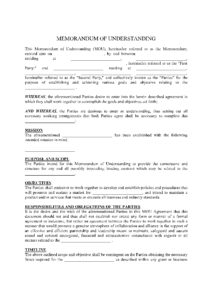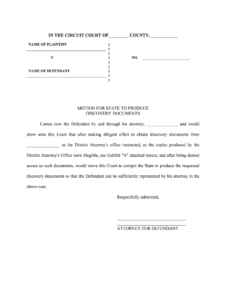Utilizing such a structure offers several advantages. It streamlines the initiation process, saving time and effort for all participants. A well-drafted document clarifies the issues at stake, promoting a shared understanding among the parties. It also helps establish a framework for the mediation process, fostering a more organized and productive discussion. This can lead to quicker, more amicable resolutions and potentially reduce legal costs.
This structured approach to dispute resolution provides a foundation for a productive mediation process. The following sections will explore the key components of these documents, offer practical examples, and guide users through the process of creating and utilizing them effectively.
Key Components of a Mediation Request
Effective mediation requests contain essential elements that facilitate a smooth and productive process. These components ensure clarity, focus the discussion, and promote a shared understanding among the parties involved.
1. Identification of Parties: Clear identification of all parties involved in the dispute, including their contact information, is crucial. This ensures proper communication and notification throughout the mediation process.
2. Description of the Dispute: A concise and objective description of the nature of the disagreement is essential. This includes the core issues, relevant dates, and a brief history of the conflict. Avoid emotional language and focus on factual details.
3. Statement of Desired Outcome: Articulating the desired outcome of the mediation helps focus the process and provides a framework for negotiations. This statement should be realistic and achievable, reflecting the interests of the requesting party.
4. Previous Attempts at Resolution: Documenting any previous attempts to resolve the dispute demonstrates a commitment to finding a solution and provides context for the mediator. This can include informal discussions, negotiations, or other forms of dispute resolution.
5. Suggested Mediator (Optional): If a preferred mediator is identified, their name and contact information can be included. This is particularly helpful if the parties have prior experience with a specific mediator or if specialized expertise is required.
6. Date and Signature: Including the date and signature of the requesting party formalizes the request and adds a level of authenticity. This also serves as a record of when the request was initiated.
Careful consideration of these components contributes to a well-crafted mediation request. A comprehensive request increases the likelihood of a successful mediation, facilitating a more efficient and amicable resolution to the dispute.
How to Create a Mediation Request
Creating a well-structured mediation request increases the likelihood of a successful mediation process. A clear and comprehensive request ensures all necessary information is readily available to the mediator and involved parties. The following steps outline the process of creating such a document.
1. Heading and Identification of Parties: Begin the document with a clear heading, such as “Request for Mediation.” Clearly identify all parties involved in the dispute, including full names, addresses, phone numbers, and email addresses.
2. Description of the Dispute: Provide a concise and objective account of the disagreement. Focus on factual details, relevant dates, and the core issues in contention. Avoid emotional language and subjective opinions. Maintain a neutral tone throughout this section.
3. Statement of Desired Outcome: Articulate the desired resolution or outcome of the mediation. This statement should be specific, measurable, achievable, relevant, and time-bound (SMART). Realistic expectations facilitate a more productive negotiation process.
4. History of Resolution Attempts: Detail any previous attempts made to resolve the dispute. This includes informal discussions, negotiations, or other forms of alternative dispute resolution. Documenting these efforts demonstrates a commitment to finding a solution.
5. Proposed Mediator (Optional): If the parties have agreed upon a preferred mediator, include their name and contact information. If specialized expertise is required, specify the relevant area of expertise.
6. Confidentiality Statement: Include a statement acknowledging that the mediation process and all related communications are confidential. This fosters open communication and encourages candid discussions.
7. Date and Signature: Conclude the document with the date and signature of the requesting party. This formalizes the request and confirms the accuracy of the information provided.
8. Supporting Documentation (Optional): Relevant supporting documentation, such as contracts, agreements, or correspondence, may be attached to provide additional context.
A comprehensive and well-structured request facilitates a more efficient and productive mediation process. By following these guidelines, parties can initiate mediation with clarity and purpose, increasing the likelihood of a mutually agreeable resolution.
A structured approach to initiating mediation, utilizing a template, provides a crucial framework for effective dispute resolution. It ensures clarity and consistency in communication, streamlining the process and promoting a shared understanding among all participants. The key components, including a clear description of the dispute, desired outcomes, and prior resolution attempts, contribute significantly to a productive mediation process. Careful consideration of these elements and adherence to a structured format empowers parties to engage in mediation with clarity and purpose.
Effective dispute resolution fosters collaboration and understanding, contributing to stronger relationships and more sustainable outcomes. Embracing structured mediation processes allows individuals and organizations to navigate disagreements constructively, minimizing conflict and maximizing the potential for mutually beneficial solutions. This proactive approach to conflict management ultimately benefits all stakeholders involved, promoting a more harmonious and productive environment.

